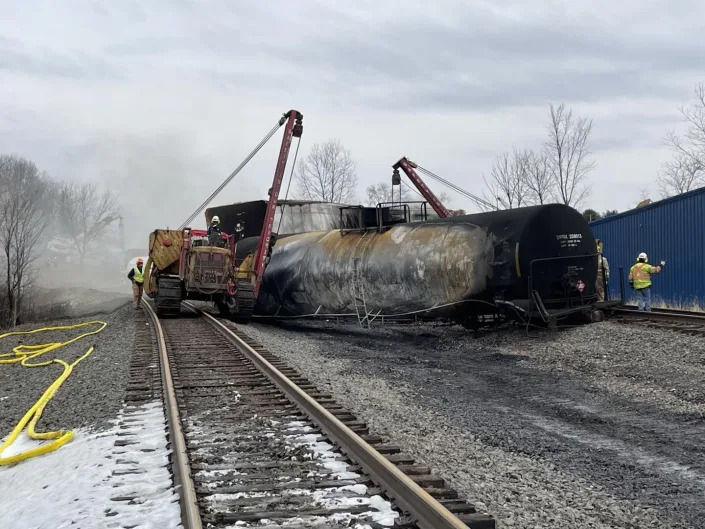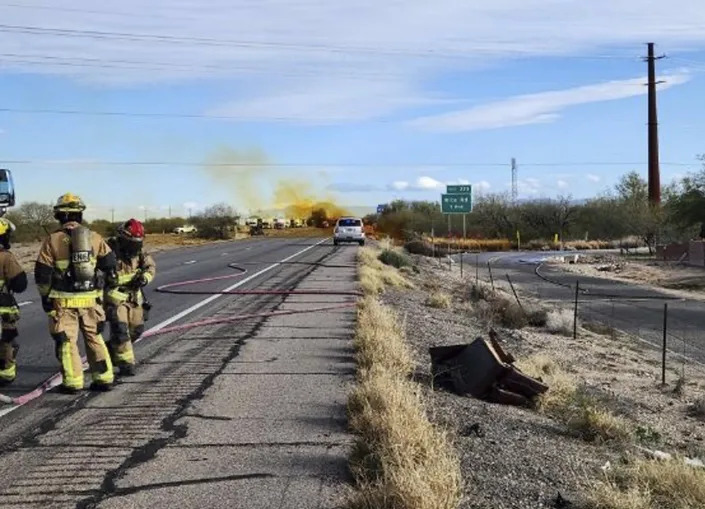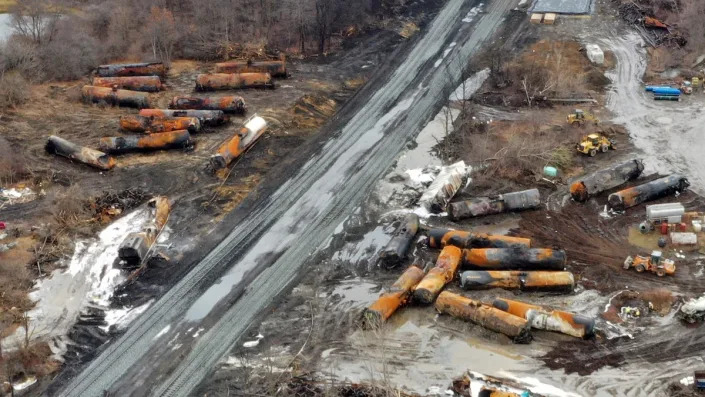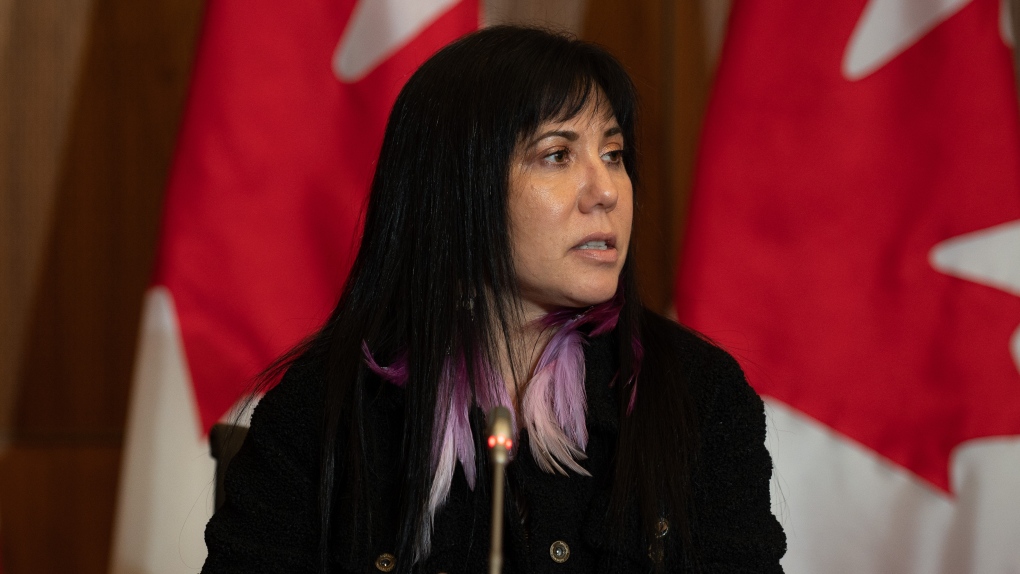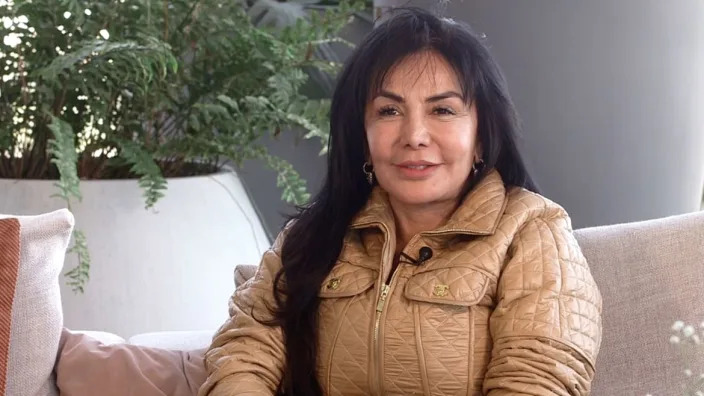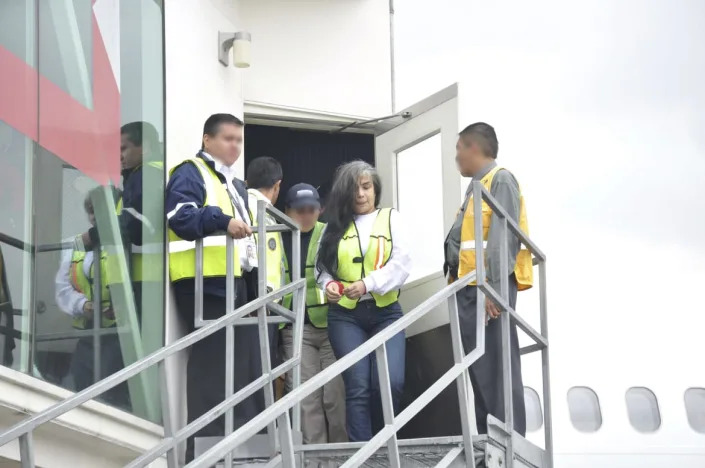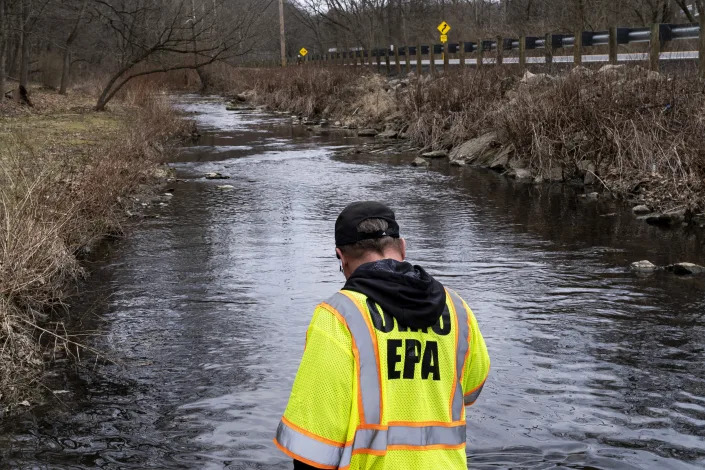
An EPA Emergency Response worker checks for chemicals that have settled at the bottom of a creek in East Palestine, Ohio (Michael Swensen / Getty Images file)
Sarah Fitzpatrick
Tue, February 21, 2023
The Environmental Protection Agency announced a sweeping enforcement action against Norfolk Southern on Tuesday, compelling the rail company to conduct and pay for cleanup actions associated with the Feb. 3 derailment of a train carrying toxic chemicals in East Palestine, Ohio.
“The Norfolk Southern train derailment has upended the lives of East Palestine families, and EPA’s order will ensure the company is held accountable for jeopardizing the health and safety of this community,” said EPA Administrator Michael Regan in remarks prepared for a news conference in East Palestine. “Let me be clear: Norfolk Southern will pay for cleaning up the mess they created and for the trauma they’ve inflicted on this community.”
If the company fails to complete any of the actions ordered by the EPA, the agency will “immediately” conduct the necessary work and then seek to compel Norfolk Southern to pay triple the cost. The order will require the company to identify and clean contaminated soil and water; pay any EPA costs, including reimbursing the agency for cleaning services that it will offer to residents and businesses; and participate in public meetings at EPA’s request and post information on-line.
The rail company already faces multiple class-action suits from members of the East Palestine community over the incident, which forced residents within roughly a mile radius to evacuate their homes.
The Ohio state attorney general’s office has also indicated it plans to take legal action against Norfolk Southern.
After the derailment of the 150-car train carrying hazardous chemicals through the eastern Ohio town, Norfolk Southern released and burned a toxic chemical in the area to avoid an explosion.
On Tuesday, the Ohio Health Department opened a clinic in East Palestine to address mounting health concerns among residents.
The department said in a news release Sunday that it would open the clinic in partnership with the Columbiana County Health Department and with support from the U.S. Department of Health and Human Services.
It said the clinic will be available to East Palestine-area residents “who have medical questions or concerns related to the recent train derailment.”
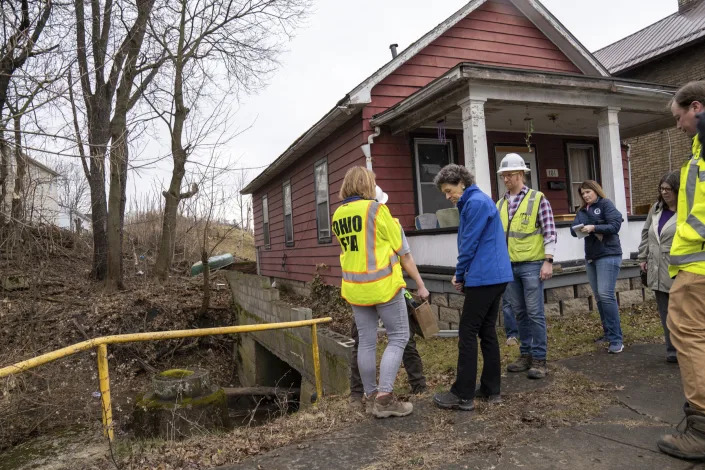
Ohio EPA officials tour the damage in East Palestine, Ohio
(Lucy Schaly / Pittsburgh Post-Gazette via AP file)
The EPA says it began testing air quality in the East Palestine area within 24 hours of the derailment, including the use of a mobile analytical laboratory. The agency said Tuesday that it has assisted with indoor air monitoring of more than 550 homes under a voluntary screening program offered to residents, and that “no detections of vinyl chloride or hydrogen chloride were identified above levels of concern.”
Regan expressed gratitude to first responders and EPA personnel on the ground in Ohio, and said that the EPA will “continue to coordinate closely with our local, state, and federal partners through a whole-of-government approach to support the East Palestine community during the remediation phase. To the people of East Palestine, EPA stands with you now and for as long as it may take.”
Norfolk Southern did not immediately respond to a request for comment.
The EPA says it began testing air quality in the East Palestine area within 24 hours of the derailment, including the use of a mobile analytical laboratory. The agency said Tuesday that it has assisted with indoor air monitoring of more than 550 homes under a voluntary screening program offered to residents, and that “no detections of vinyl chloride or hydrogen chloride were identified above levels of concern.”
Regan expressed gratitude to first responders and EPA personnel on the ground in Ohio, and said that the EPA will “continue to coordinate closely with our local, state, and federal partners through a whole-of-government approach to support the East Palestine community during the remediation phase. To the people of East Palestine, EPA stands with you now and for as long as it may take.”
Norfolk Southern did not immediately respond to a request for comment.

JOHN SEEWER and MICHAEL RUBINKAM
Tue, February 21, 2023
EAST PALESTINE, Ohio (AP) — Federal environmental regulators on Tuesday took charge of the cleanup from the East Palestine, Ohio train derailment and chemical burn and ordered Norfolk Southern to foot the bill.
The Environmental Protection Agency told Norfolk Southern to take all available measures to clean up contaminated air and water, and also said the company would be required to reimburse the federal government for a new program to provide cleaning services for impacted residents and businesses.
The EPA warned Norfolk Southern that if failed to comply with its order, the agency would perform the work itself and seek triple damages from the company.
“The Norfolk Southern train derailment has upended the lives of East Palestine families, and EPA’s order will ensure the company is held accountable for jeopardizing the health and safety of this community,” EPA Administrator Michael Regan said in a statement ahead of a news conference with the governors of Ohio and Pennsylvania.
“Let me be clear: Norfolk Southern will pay for cleaning up the mess they created and for the trauma they’ve inflicted on this community," he said.
“In no way shape or form will Norfolk Southern get off the hook for the mess they created," Regan said at the press conference.
He added that he knows the order “cannot undo the nightmare that families in this town have been living with, but it will begin to deliver much needed comfort for the pain that Norfolk Southern has caused."
The agency said it would release more details on the cleanup service for residents and businesses this week.
The EPA said its order marks the end of the “emergency” phase of the derailment and the beginning of long-term remediation phase in the East Palestine area.
Ohio Gov. Mike DeWine on Tuesday also acknowledged the community’s concern that it will be left to handle the aftermath on its own once the news cameras leave and public attention turns elsewhere, and he assured residents that won’t be the case.
EPA issued the order under the so-called Superfund law that gives the agency authority to order those responsible for contamination or hazardous waste to clean it up. EPA can fine the railway up to $70,000 a day if the work is not completed. EPA can also do the work itself if necessary and bill Norfolk Southern triple its costs.
Appearing at the news conference with Regan, DeWine and other officials, Pennsylvania Gov. Josh Shapiro blasted Norfolk Southern over what he called its “failed management of this crisis," saying the company chose not to take part in a unified incident command, and provided inaccurate information and conflicting modeling data.
“The combination of Norfolk Southern's corporate greed, incompetence, and lack of concern for our residents is absolutely unacceptable to me,” he said.
Shapiro said his administration had made a criminal referral of Norfolk Southern to the Pennsylvania attorney general’s office, while DeWine said Ohio’s attorney general had also launched an investigation.
Separately, Transportation Secretary Pete Buttigieg announced a package of reforms Tuesday, calling on railroad operators to take immediate steps to improve safety, such as accelerating the planned upgrade of tank cars.
Some 50 freight cars derailed on the outskirts of East Palestine, near the Pennsylvania state line, prompting persistent environmental and health concerns. The derailment prompted an evacuation as fears grew about a potential explosion of smoldering wreckage.
Officials seeking to avoid the danger of an uncontrolled blast chose to intentionally release and burn toxic vinyl chloride from five rail cars, sending flames and black smoke again billowing high into the sky. That left left people questioning the potential health impacts for residents in the area and beyond, even as authorities maintained they were doing their best to protect people.
___
Rubinkam reported from northeastern Pennsylvania. AP writer Matthew Daly in Washington contributed to this report.

